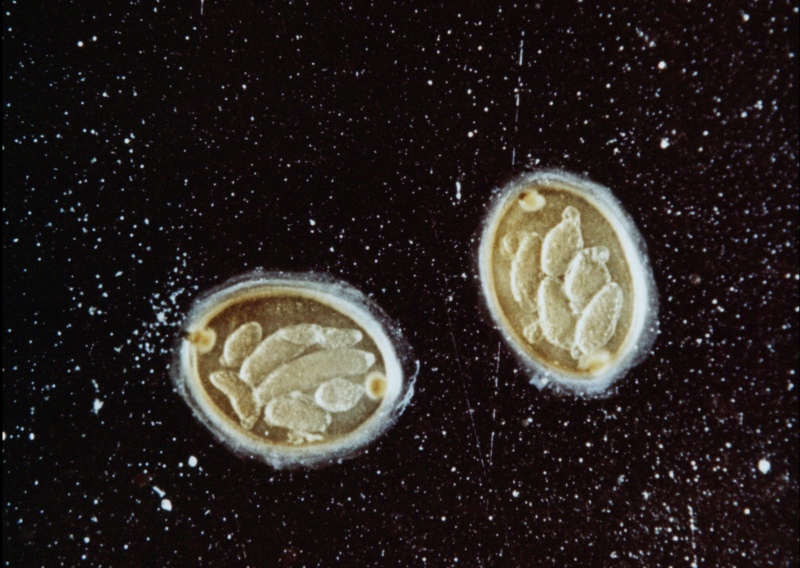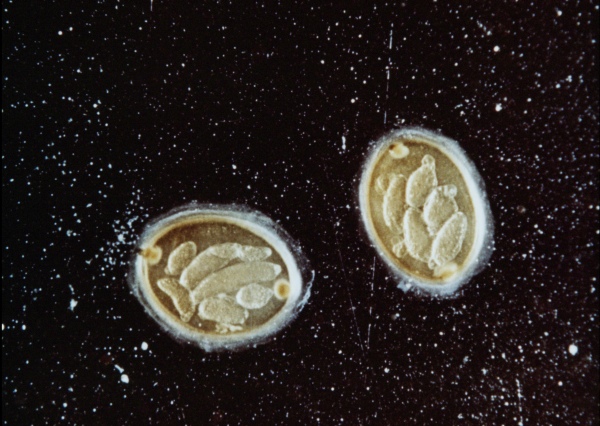Polish biology films – Karol and Marta Marczak
as part of Life is Motion film review
-
Polish biology films – Karol and Marta Marczak
-
The first, opening set will be dedicated entirely to films created by Karol Marczak and his wife Marta. As early as in the 1920s, Marczak went down in cinema history as an inventor, participating in the technological ferment of the pioneering period of cinematography. In 1932, he founded the Experimental Film Studio in Żyrardów, and between 1945 and 1950, he and Marta ran the Nature Film Studio. Later, they both made films while working at the Educational Film Studio in Łódź. Until the 1970s, Marczak made nature and biology films there, revolutionising their form and technique. His work is rooted in the tension between art and science. The films are visually stunning, using artistic means to push the boundaries of what can be displayed on screen, but also showing care taken to keep in line with the state of scientific knowledge. They can also be disturbing, since they include key issues of cinema theory, like the problem of movement and time, or the possibility of depicting life and the paradox of constant killing – of both preparations and life in a film frame. We are thus watching a beautiful but terrifying spectacle of cinematic life and death.
-
-
- Hydrophilus Aterrimus
- produced by Marta and Karol Marczak, 1946, 12’
- It lives in our ponds and ditches, swims well and, like all aquatic insects, breathes air from above the water. It lays its eggs in a specially built cocoon: its opening is closed by a long tube that supplies air from above the water. The hatching larvae live a predatory life – they don't even spare little fish. In order to pupate, the larva digs itself into the bottom, builds a cradle where it survives the pupa stage and only comes to the surface as an adult insect.
- produced by Marta and Karol Marczak, 1946, 12’
- The Development of a Bird Embryo
- produced by Karol Marczak, 1956, 12’
- The chicken egg, familiar to everyone, holds the secret to life. The birth process is long and complicated. The camera captures each phase of the formation of a new organism. Here is the primordial streak, the core of the future bird, the blood system is formed, the beak, the eye, the wings, the legs… The new organism is alive, it moves, its heart beats. Finally, the decisive moment arrives: a few strokes of the beak and the little yellow chick enters a new, unknown world.
- produced by Karol Marczak, 1956, 12’
- The Heart Work of a Trout Embryo
- produced by Karol Marczak, 1958, 20’
- An extremely interesting scientific documentary. In fact one could say that we are watching life and death on the screen. Professor Grodzieński dissects a heart from a sea trout embryo. Microscopic images reveal the formation of the heart and its contractions. Eliminating individual parts of the heart, we arrive at the centre of contractions. The influence of temperature on heart action is crucial. An increase in temperature is followed by faster contractions of the heart. The heart rolls the blood into the blood vessels. Their finest branches reach every corner of the body. We follow the movement of the blood cells in the vessels. When the temperature exceeds 25°C, the heart stops.
- produced by Karol Marczak, 1958, 20’
- Life is Motion
- produced by Karol Marczak, 1960, 13’
- In this documentary, the director proves that movement is one of the most important manifestations of life. The film shows what is imperceptible to the naked eye, from movement in single cells or of cells themselves, to the movements of single-celled protozoa and shutter movements. The film focuses on the mechanics of movement, illustrating in detail and comprehensively the movement phenomena occurring in living cells and protozoa. The images have been magnified up to 1200 times.
- produced by Karol Marczak, 1960, 13’
- Mantis
- produced by Karol Marczak, 1959, 11’
- A story about the life and habits of an insect called the mantis. The film follows the stages of development of the mantis from larva to adult and describes its predatory habits. The mantis, a cannibal insect, after a fierce fight eats specimens of its own species, and in the mating season even its partner.
- produced by Karol Marczak, 1959, 11’
- Life of a Leech
- produced by Karol Marczak, 1968, 11’
- A film monograph about the leech, a species belonging to the annelids, showing the living conditions, structure and reproduction method of leeches and presenting some of the 300 known varieties with particular emphasis on the medical leech because of its practical use.
- produced by Karol Marczak, 1968, 11’
- Electron Microscopy
- produced by Karol Marczak, 1975, 11’
- A popular presentation of basic topics related to electron microscopy. The film shows: the construction and principles of operation of optical microscope and transmission and scanning electron microscopes; a comparison of images of different preparations obtained in particular microscopes through the confrontation of: optical microscope with transmission electron microscope, electron microscopes – transmission and scanning –, and finally all three types of microscopes. The film then illustrates the preparation of several types of specimens for examination in electron microscopes. The photographs of the final sequence give an idea of the possibilities offered by electron microscopy on the example of images of a fly's wing, silk fibres, dust and flower pollen, and animal skin.
- produced by Karol Marczak, 1975, 11’



